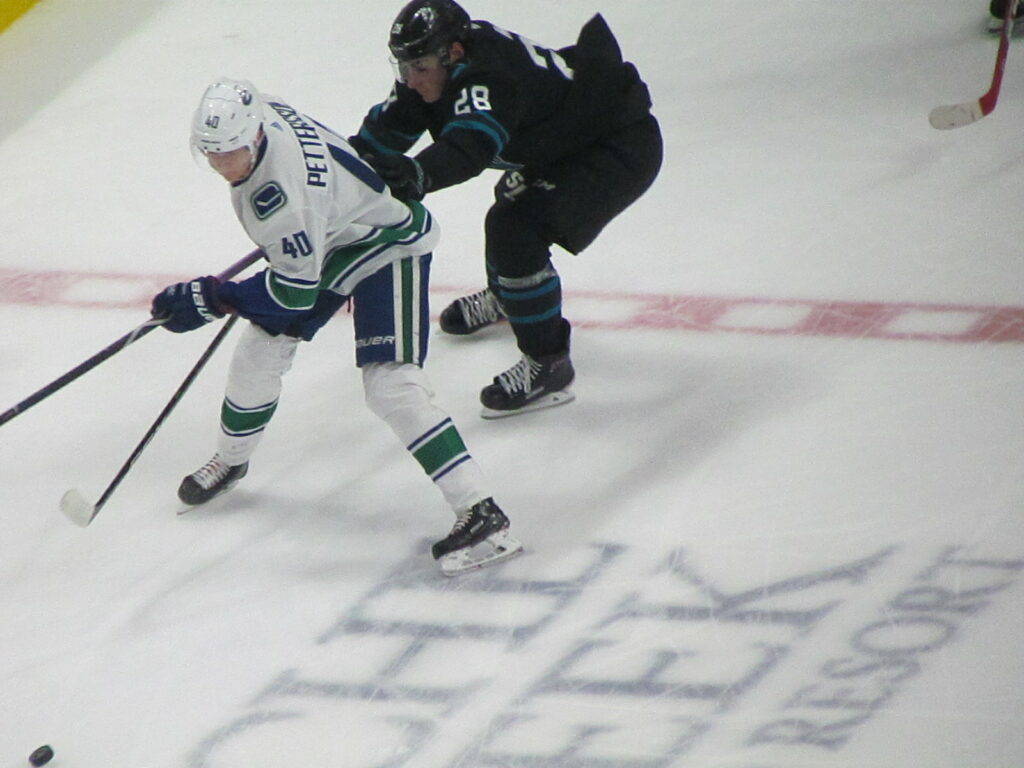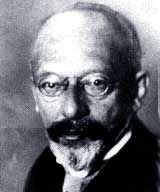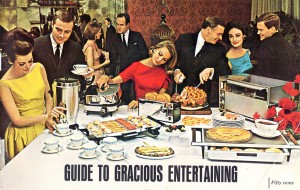Chapter 9. Groups and Organizations
7.1 Groups and the meso level of society
Excluding the global for the time being (see Chapter 1. An Introduction to Sociology), sociologists describe group behaviour at three levels of social interaction: micro, meso, and macro.
Micro Meso Macro
At the micro-level of analysis, the focus is on the social dynamics of face-to-face interaction: How are specific individuals in specific locations able to interact in a coherent and consistent manner? For example, how is a conversation possible? How does a person know when it is their turn to speak or when someone has been speaking too long? Various types of social interaction at the micro-level were discussed in Chapter 6. Social Interaction.
At the meso-level of analysis, the focus shifts to the characteristics of specific networks, groups, and organizations (i.e.,collectivities). The meso-level refers to the connection, interaction and ongoing coordination of numerous different social roles simultaneously. When sociologists speak of a school, for example, they need to move beyond the analysis of single face-to-face interactions — interactions in a single setting where participants are co-present — to examine the combined interactions and relationships between students, parents, teachers, and administrators. At this level, sociologists ask, how do the properties of different types of local social collectivity affect or alter the behaviour of individuals? Why does an individual’s behaviour change when they are in a collectivity? How do collectivities constrain or enable their members to act in certain ways? What is it about collectivities that entice people to conform? In these meso-level examples sociologists are still talking about specific, identifiable individuals — albeit not necessarily in direct face-to-face situations — but take into account the complex entwinement of their lives to account for their behaviour.
Finally, at the macro-level of analysis, the focus is on the properties of large-scale, society-wide social interactions: the dynamics of institutions, classes, or whole societies. The macro therefore extends beyond the immediate milieu or direct experience of individuals. These large-scale social structures might be nothing more than the aggregations of specific interactions between individuals at any particular moment as Simmel argues. However, the properties of structures, institutions, and societies — described by statistical analysis, cross-cultural comparisons, or historical research — also have a reality that Emile Durkheim called sui generis (i.e., of their own kind). The properties that make society possible at a macro scale cannot be explained by, or reduced to, their components without missing their most important features.

To illustrate the micro, meso, and macro distinction, consider how a sociologist would analyze the game of hockey. At the micro-level of analysis, the sociologist would be interested in the interpersonal communication, interaction and role-play that governs how various specific individuals (players, coaches, managers, owners, fans, etc.) interact face to face. With respect to the players, how do they communicate on the ice in a coherent manner during a game in order to move the puck out of the defensive zone, enter the offensive zone, defend against offensive plays, cycle the puck behind the net, set up a power play, etc.? This level of analysis would examine the personal dynamic between individual players, their ability to read each other’s cues, to call out on the ice, to anticipate each other’s moves, and to work off each other’s strengths, etc. (or the failure to do so). In this regard, hockey is a symbolic interaction, which depends on individuals sending signals and interpreting signals.
At the meso-level of analysis, a sociologist takes a slightly wider view. Its focus lies between micro-level face to face interactions and macro-level society-wide phenomena. The meso-level of analysis takes into account group or organization dynamics involving the team, local media and fans as social groups. How does local media reporting on a team’s fortunes and “story lines” engage with the feelings of both team members and fans for example? Or, focusing on fans as a group, what are the social dynamics of local fandom? How and why do fans get so emotionally involved in the fortunes of their favourite team? How do they sort themselves into categories — “true” fans and “occasional” fans — and with what consequences? How do team rivalries between fans develop? Similarly, the sociologist might be interested in the hockey team as a business organization. What are the different roles in the organization, what type of leadership is employed, which roles have authority in what areas of team operations, how is communication between coaches, managers and players managed. How is the league organized, managed and funded? How are these relationships coordinated on an ongoing basis to produce 80 hockey games in a season?
The meso-level sociologist might also be interested in trying to define what defines hockey as a type of activity — a “game.” Roger Caillois (1961) noted that games, or what Simmel called the “play forms” of association, constitute a separate and unique type of activity. People cross a boundary whenever they leave the ordinary world of everyday life to enter the zone of play. In particular, games are defined by six characteristics: (1) they are free (playing cannot be obligatory), (2) they are separate (play is distinct from ordinary life), (3) they are uncertain (outcomes cannot be determined in advance), (4) they are unproductive (play by itself creates neither goods nor wealth), (5) they are governed by rules (under conventions that suspend ordinary laws), and (6) they are make-believe (they partake in a second reality or a “free unreality”) (Caillois, 1961). In part, due to the distinction between games and normal life, activities like the use of violence and the infliction of injury — that would be punishable by law off the ice — are events that are frequently celebrated (or at most deplored) when they occur on the ice. It is the status of hockey as a game that makes the issue of its violence both ambiguous and subject to arbitrary assessments and punishments.
Relatedly, a meso-level of analysis might lead us to more troubling areas of study. Why have male hockey players so often been implicated in sexual violence outside of the rink? In 2022, Hockey Canada officials revealed the organization has paid out nearly $9 million in settlements since 1989 to 21 people alleging sexual abuse. A meso-level analysis would examine such factors as locker-room culture, ‘bro-code’ enforcement, the performance of hyper-masculinity in initiation rituals, organizational attitudes to drug and alcohol abuse, gender representation in hockey organizations, established hierarchies in governing bodies and other factors (Moore et. al., 2022).
At the macro-level of analysis, the sociologist would be interested in how hockey is structured by the type of society in which it is embedded. The Micmac game of wolchamaadijik, which is cited as an early stick and ball progenitor of Canadian hockey, was played in the context of ceremonial exchanges between native tribes (Rand, 2005). NHL hockey, on the other hand, is a capitalist enterprise, and as such, it is a product or commodity produced for sale on the market for profit. The commodity is the spectacle of the hockey game, which fans pay to see and advertisers pay to use as a vehicle for promoting their products. Therefore, the organization and dynamics of the sport are defined by the logic of capital as Marx defined it — a logic in which teams are competitive corporations that invest in, buy and sell their players like any other asset; in which team hometowns are assessed in terms of their viability as profitable markets (hence the oddity of having teams based in Florida or California where natural ice probably has not existed for 10,000 years); in which the logic of class struggle periodically leads to disruptions in play (such as lock-outs and strikes); and in which an elaborate set of regulations (like salary caps and organized draft picks) are instituted by the league to ensure the viability of the competition and manage the excesses and crises that are tendencies of capitalist accumulation. A feminist approach might explore how women have been excluded from this ‘national game’, the longer history of women’s hockey and the economics behind women’s hockey and how this is different/similar to other sports such as tennis.
Making Connections: Classical Sociologists
Georg Simmel and Formal Sociology

Georg Simmel (1858–1918) was an early German sociologist and contemporary of Max Weber. He developed what he called formal sociology, or the sociology of social forms, in order to understand how a collection of individuals driven by their own individualistic interests could coalesce into a group with common purposes that could persist and develop through time. When he said that “society exists where a number of individuals enter into interaction” (1908/1971), he meant that whenever people gather, something happens that would not have happened if the individuals had remained alone. They begin to “correlate their condition” with that of others. They influence others and are influenced in return. A “reciprocity of effects” or “reciprocal influence” occurs that Simmel calls “sociation.” People attune themselves to one another in a way that is very similar to musicians tuning their instruments to one another. A pattern or form of interaction emerges that begins to guide or coordinate the behaviour of the individuals.
An example Simmel uses is of a cocktail party where a subtle set of instructions begins to emerge which defines what can and cannot be said. In a cocktail party where the conversation is light and witty, the effect would be jarring if someone suddenly tried to sell you an insurance policy or confided about the spousal abuse they had suffered. The person would be thought of as being crass or inappropriate. Similarly, in the pleasant pastime of flirtation, if one of the parties began to press the other to consummate the flirtation by having sex, the flirtation would be over. Flirtation is a form of interaction in which the answer to the question of having sex — yes or no — is perpetually suspended.

In both examples, Simmel argued that the social interaction had taken on a specific form. Both were examples of what he called the play form of social interaction, or pure sociability: the pleasure people experience from the mere fact of being together, regardless of the content of the interaction (Simmel, 1910/1971). If the cocktail party conversation suddenly turns to a business proposition or an overly personal confession, it is no longer playful. The underlying form of the interaction has been violated, even if the participants were not consciously aware that they had adopted a particular form of interaction. Simmel proposed that sociology would be the study of the social forms that recur in different contexts and with different social contents. The same play form governs the interaction in two different contexts with two different contents of interaction: one is the free-ranging content of polite conversation (the cocktail party form); the other is sexual desire (the flirtation form). Different contents or interests can be realized in different forms and vice versa with quite different consequences for the individuals involved. The same erotic impulse (content) can be expressed through the forms of a flirtation, a casual sexual relationship, a dating relationship, a marriage, or a transaction with a prostitute. On the other hand, the same form of competition can organize the impulse to play hockey, to gain financially, to learn, or to dress stylishly. The emphasis on forms is why Simmel called his approach to the study of society “formal sociology.”
Media Attributions
- Figure 7.3 Now Form A Band by Mark Cottle, via Airburst, is licensed under a CC BY-SA 2.0 UK licence.
- Figure 7.4 Elias Pettersson and Timo Meier by Dinur is used under 2.0 Generic CC BY-NC-ND 2.0 licence.
- Figure 7.5 File:Simmel 03.jpg, via Wikimedia Commons, is in the public domain.
- Figure 7.6 …more party animals, by James Vaughan, via Flickr, is used under a CC BY-NC-SA 2.0 licence.

